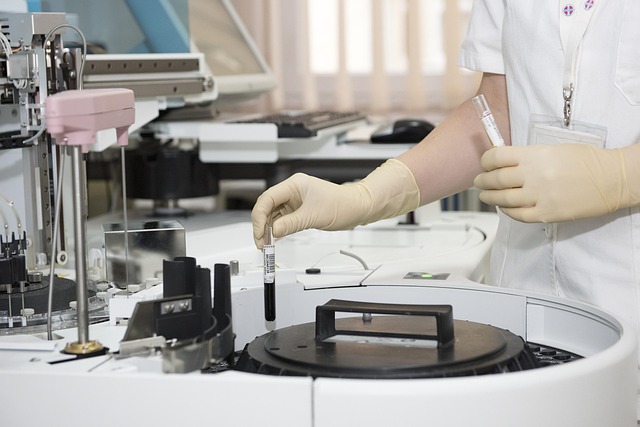In the past decade, the integration of robotics into medical diagnostics has shifted the paradigm from manual, labor‑intensive practices to highly precise, data‑driven processes. These transformative tools, often referred to as robotic medical diagnostic systems, combine advanced imaging, artificial intelligence, and robotic manipulation to deliver faster, more accurate, and less invasive evaluations of patient health. The result is a healthcare environment that is not only more efficient but also more equitable, as sophisticated diagnostics become available to remote or underserved communities through tele‑robotic platforms.
What Are Robotic Medical Diagnostic Systems?
Robotic medical diagnostic systems are engineered assemblies that perform diagnostic tasks with minimal human intervention. They typically consist of a robotic arm or platform, high‑resolution imaging sensors, software algorithms for image analysis, and a user interface that allows clinicians to interact with the system. Unlike traditional diagnostic tools, which require a physician to manually manipulate imaging devices or perform biopsy procedures, these systems automate the entire workflow, from sample acquisition to image interpretation.
- Autonomous imaging: The robot can position an imaging probe precisely, capturing optimal views without manual repositioning.
- Computer vision: Machine learning models analyze images in real time, flagging abnormalities that might be subtle to the human eye.
- Remote operation: Clinicians can control the robot from a distance, enabling tele‑medicine consultations in rural or disaster zones.
Core Technologies Driving the Field
Three pillars underpin the capabilities of modern robotic medical diagnostic systems: robotics, imaging, and artificial intelligence. Each contributes uniquely to the system’s overall performance.
“When a robot combines precise motion control with sophisticated image analysis, the diagnostic process becomes both repeatable and scalable.” – Dr. L. Nguyen, Robotics Research Lead
- Robotic Precision – The use of serial or parallel manipulator designs ensures that diagnostic instruments can reach every anatomical niche with sub‑millimetre accuracy.
- Advanced Imaging – High‑resolution modalities such as ultrasound, optical coherence tomography, and even miniaturized X‑ray systems are integrated into the robotic platform.
- AI‑Powered Analysis – Convolutional neural networks, support vector machines, and other machine learning techniques convert raw sensor data into actionable clinical insights.
Clinical Benefits and Impact on Patient Care
Robotic medical diagnostic systems deliver a range of advantages that directly translate to better patient outcomes. These benefits are especially pronounced in high‑volume or high‑risk clinical settings.
- Increased Diagnostic Accuracy – Automated image analysis reduces inter‑observer variability, ensuring that subtle lesions are detected consistently.
- Reduced Procedure Times – By streamlining sample acquisition and imaging, robots cut down on total examination time, allowing more patients to be seen each day.
- Lowered Patient Stress – Many robotic systems are designed for minimal physical contact, decreasing anxiety for patients who may be apprehensive about invasive procedures.
- Enhanced Accessibility – Tele‑robotic diagnostics enable specialists to reach patients in remote regions, bridging gaps in healthcare delivery.
Safety and Reliability: Addressing Potential Concerns
While the promise of robotic diagnostics is immense, the medical community rightly demands rigorous safety and reliability standards. Developers employ multiple layers of verification, from redundant sensors to fail‑safe software architectures. Clinical trials now routinely include extensive safety endpoints, ensuring that robotic systems meet or exceed the regulatory benchmarks set by bodies such as the FDA and EMA.
“Robotic diagnostic platforms are built with safety as a first priority, ensuring that any unintended motion is immediately countered by autonomous safeguards.” – Dr. M. Patel, Clinical Safety Officer
Real‑World Applications: From Radiology to Oncology
Several hospitals and research institutions have begun deploying robotic medical diagnostic systems across a spectrum of specialties. Below are a few illustrative use cases.
- Automated Endoscopic Biopsy – A robotic arm equipped with a fine‑needle aspiration tool performs lung and liver biopsies under real‑time ultrasound guidance, reducing the need for expert endoscopists on site.
- Point‑of‑Care Ultrasound – Portable robotic ultrasound units scan patients in emergency departments, enabling rapid triage of trauma cases with minimal hands‑on time.
- Digital Pathology Integration – Robots automatically slide tissue samples into imaging stations, digitizing specimens for AI‑driven histopathological analysis.
Economic Considerations and Implementation Strategies
Adopting robotic medical diagnostic systems requires a thoughtful investment plan. While the upfront cost can be significant, the long‑term savings from improved throughput, reduced repeat visits, and lower complication rates often justify the expenditure. Institutions are exploring several financial models: direct purchase, leasing arrangements, and partnership agreements with technology vendors. Additionally, reimbursement frameworks are evolving to recognize the value added by robotic diagnostics, encouraging broader adoption.
Key Steps for Successful Integration
- Needs Assessment – Identify clinical workflows that would benefit most from automation and quantify potential gains.
- Stakeholder Engagement – Involve clinicians, IT staff, and administrators early to align expectations and address concerns.
- Training & Support – Provide comprehensive training for medical staff, and establish a robust support contract for maintenance and software updates.
- Data Governance – Ensure compliance with privacy regulations (HIPAA, GDPR) by implementing secure data pipelines and encryption.
The Future Landscape: Emerging Trends and Innovations
Robotic medical diagnostic systems are poised to evolve along several trajectories, driven by advances in hardware miniaturization, cloud computing, and interdisciplinary research.
- Swarm Robotics – Coordinated groups of micro‑robots could perform distributed sampling within a single organ, improving diagnostic resolution.
- Edge Computing – Onboard processing will reduce latency, allowing robots to make diagnostic decisions in real time without relying on cloud connectivity.
- Hybrid Human‑Robot Interfaces – Enhanced haptic feedback and augmented reality overlays will enable clinicians to retain control while leveraging robotic precision.
Conclusion: Toward a New Era of Diagnostic Excellence
Robotic medical diagnostic systems are reshaping the way clinicians detect, evaluate, and treat disease. By marrying mechanical precision with intelligent data analysis, these technologies deliver faster, more accurate, and more equitable diagnostics. As the field matures, the collaboration between robotics engineers, data scientists, and healthcare professionals will be essential to realize the full potential of this innovation. In a world where healthcare demands are rising and resources are stretched thin, robotic medical diagnostic systems stand as a beacon of progress, promising to elevate patient care to unprecedented heights.



